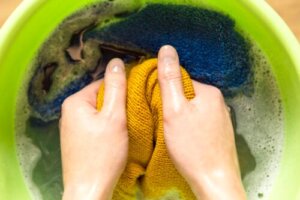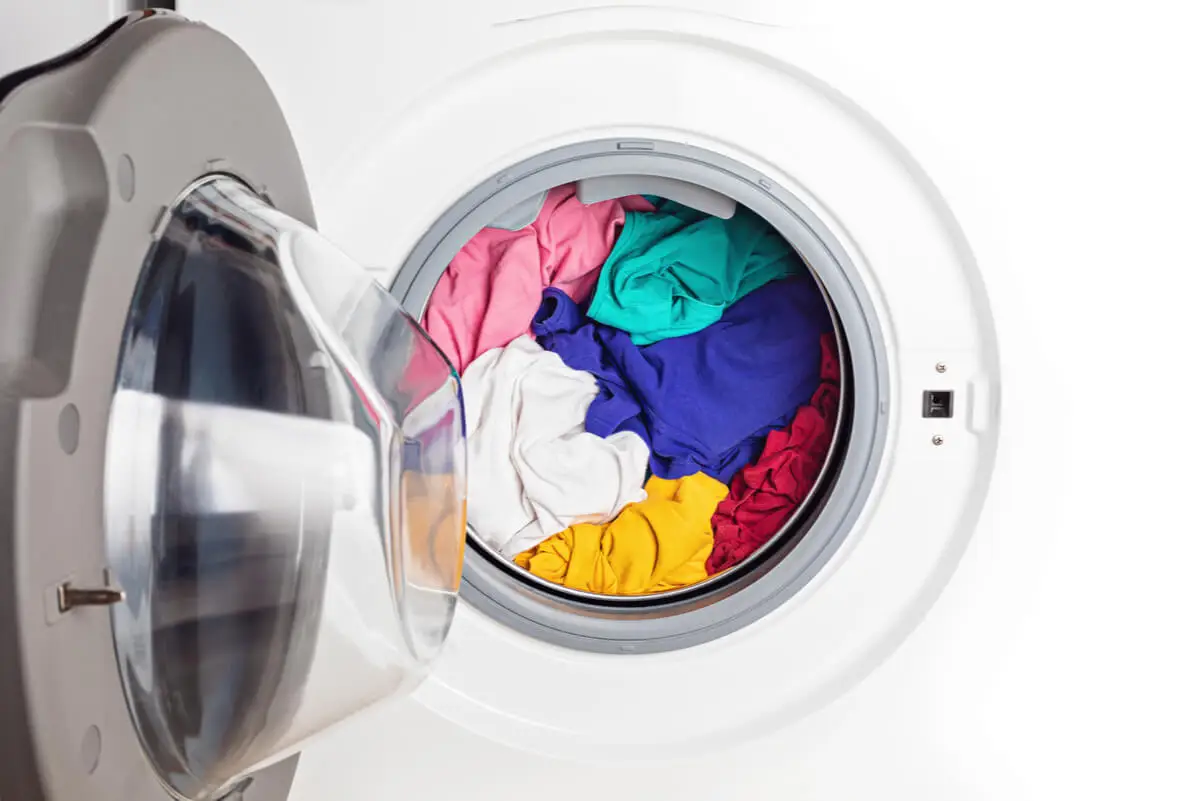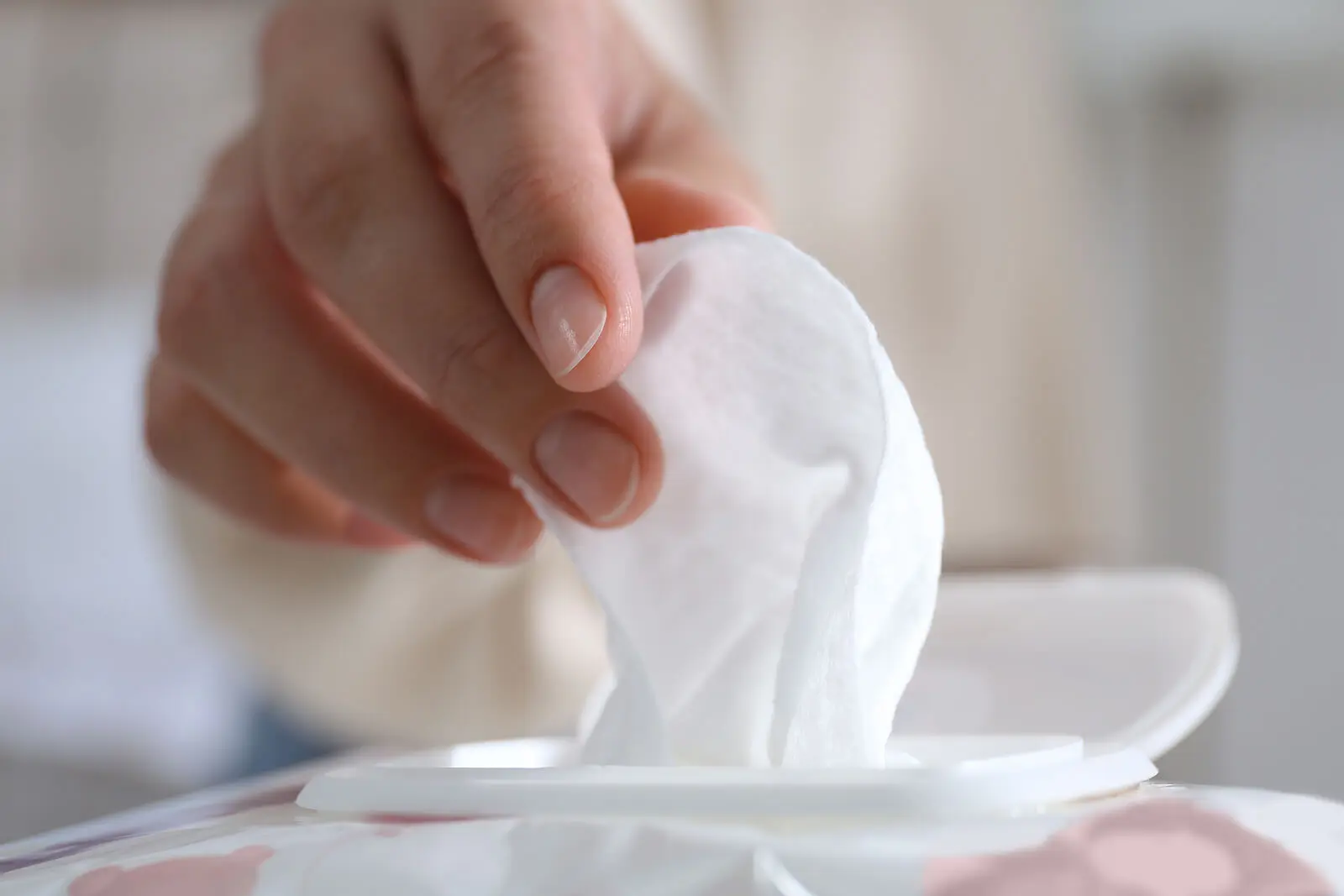How to Stop Clothes from Shedding Lint

Did you stop wearing your favorite sweater because it was shedding some fabric and when you washed it, it stuck to the rest of your clothes? It’s happened to all of us at one time or another. Actually, what we need to do is to prevent our clothes from shedding lint. This will ensure that the other clothes stay in good condition.
What is lint?
Lint is the name given to small fibers of fabric that some clothes shed and which then stick to others. In general, they tend to be gray in color because it mixes with dust and doesn’t end up looking the best.
Cotton and wool clothing are the most prone to shedding lint. These are natural fabrics, whereas synthetic fabrics, such as nylon or polyester, don’t shed lint.
Although there are implements to remove lint from garments, such as adhesive rollers, the ideal thing is to prevent it from being produced and spoiling your clothes’ appearance. Dark-colored garments are the most affected, as the lint is much more noticeable due to the contrast.
How to prevent clothes from shedding lint? 4 infallible tips
With ingredients and elements that you have at home, you can get rid of lint. First of all, you should clean the washing machine filters so that all the lint that’s already there stops floating in the machine. In addition, this will optimize its operation.
Place the clothes inside out in the washing machine. In this way, the lint that may still come off will stick to the inner side and won’t be visible.
Also, try to separate the clothes by color before washing, so that the lint that sticks to the garments isn’t so visible. Finally, be sure to use a short, gentle wash program. Especially when washing wool garments, which can undergo different processes.

1. Use white vinegar
Once again, white vinegar can fulfill a very important function, which, in this case, we apply to clothes. When you’re going to wash clothes that are are prone to shedding lint, add 250 milliliters of vinegar to the wash. In addition to preventing lint, it will soften your clothes naturally, which means you shouldn’t add commercial fabric softener.
We recommend that every now and then you run the washing machine empty and add white vinegar. This way, you will give the machine a deep cleaning.
You may be interested in: Vinegar as a Disinfectant Around the House
2. Try baking soda
Baking soda is one of the best allies we can have at home, as it’s used for many things. It’s bleaching by nature and ideal for removing yellowish stains from clothes.
In the case of lint, you can add between 2 and 3 tablespoons to the detergent you use before washing. Don’t add fabric softener in this case either.
3. Freeze lint-prone clothes
In this case, wash the clothes separately on a gentle program, using cold water. Once the clothes are dry, fold them, put them in an airtight plastic bag, and put them in the freezer for 1 or 2 days. When you take it out of the bag, shake the garment to get all the lint out.
You might be interested in: Natural Remedies with Baking Soda
4. Use a wet wipe
Yes, a simple wet wipe can help us to keep our clothes free of lint. They’re the same ones used for baby hygiene, disinfecting, or make-up removal. They can’t be replaced by tissue paper or similar items.
Place 1 or 2 wipes in the washing machine before putting the rest of the clothes. While the washing is in progress, the wipes will absorb the lint that comes out.

Preventing clothes from shedding lint is easier than it seems
Not only is it possible to eliminate the source of the lint, but it’s also very simple and economical. With simple elements we have at home we can say goodbye to this evil in a single wash. Wearing clothes with these fibers attached can give an unkempt appearance, even if they’re clean and perfumed.
Remember that there’s always the option of hand-washing clothes that shed lint.
All cited sources were thoroughly reviewed by our team to ensure their quality, reliability, currency, and validity. The bibliography of this article was considered reliable and of academic or scientific accuracy.
- Castro Leal Talamas, D. E. (2013). Bioseguridad en la ropa quirúrgica. Hospitalidad ESDAI, (23).
- Pietropaoli, A., Basti, F., & Maqueda-Blasco, J. (2015). Hogar sin pelusa Paño de microfibra Toallas Limpiezaón. Medicina y Seguridad del Trabajo, 61(240), 393-414.
- Incio Granthon, M. (2020). Efecto de soluciones acuosas de detergente, hipoclorito de sodio, bicarbonato de sodio, cloruro de sodio y jabón líquido en el crecimiento longitudinal de Phaseolus vulgares (Frijol común)
- Kasem, M. H., & Riva Juan, A. (2007). Estructura de los hilados y características de los tejidos de algodón. Parte 1: efecto de la estructura de los hilados sobre el pilling del tejido.Cuvi, N. (2019).
- Auge y decadencia de la fábrica de hilados y tejidos de algodón La Industrial, 1935-1999. Revista ecuatoriana de historia, 63-95.
This text is provided for informational purposes only and does not replace consultation with a professional. If in doubt, consult your specialist.








